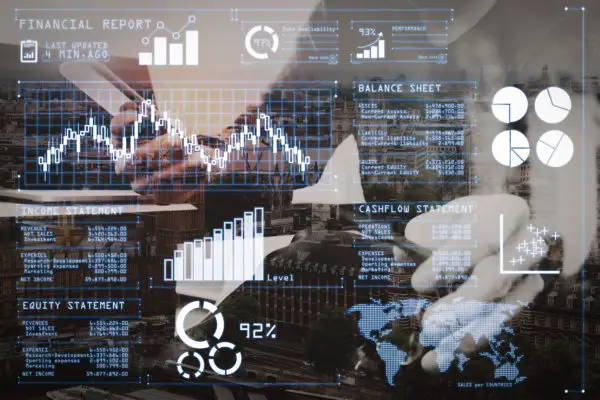Security Key Risk Indicators (KRIs) are crucial for managing and mitigating security risks. They help organizations identify potential threats before they become serious issues. Steps on how to develop Security KRIs include:
Identify Key Security Risks: Start by identifying your organization’s key security risks. These could be related to data breaches, cyber-attacks, physical security, or insider threats. A comprehensive risk assessment can help you identify these risks.
Understand the Risk: Once you’ve identified the key security risks, you must understand them thoroughly. This includes understanding the potential impacts of the risk, the likelihood of occurrence, and the vulnerabilities that could be exploited.
Identify Potential Indicators: For each security risk, identify potential indicators that could signal increased risk exposure. These could be quantitative (like the number of failed login attempts) or qualitative (like results from security audits).
Select Relevant KRIs: Not all potential indicators will be relevant. You need to select the ones that provide the most meaningful information about each risk. The best KRIs are predictive (they provide early warning signs), easy to understand, and based on readily available data.
Set Thresholds: For each KRI, you need to set a threshold to trigger a response. This could be a specific value (like a certain number of failed login attempts) or a trend (like an increase in security incidents).
Monitor KRIs: Once you’ve set your KRIs and thresholds, you must monitor them regularly. This could be done through a security dashboard or a regular security report.
Respond to Risks: You must respond if a KRI crosses its threshold. This could involve investigating the cause, taking corrective action, or escalating the issue to senior management.
Review and Update KRIs: Security risks and their indicators can change over time. You should regularly review your KRIs and update them as necessary.
Security is a crucial aspect of any organization, with cyber threats becoming increasingly common and sophisticated. In today’s digital age, companies face the challenge of protecting their sensitive data from potential breaches.
Security key risk indicators (KRIs) have emerged as critical tool to help organizations identify, measure, and manage risks effectively.
KRIs provide an objective way to assess the likelihood and impact of potential security incidents.
Monitoring KRIs regularly, organizations can quickly identify any changes or trends that could indicate an increased risk level and take corrective action promptly.
This article will delve into the significance of KRIs in modern-day cybersecurity strategies, how they are developed, implemented, and monitored, and common pitfalls that should be avoided when creating effective KRIs.

Examples of Security Risk Indicators
Security Key Risk Indicators (KRIs) provide an early warning of increased risk in various areas of an organization’s security. Here are some examples of Security KRIs:
A number of Failed Login Attempts: A sudden increase in failed login attempts could indicate a brute force attack on your systems.
The number of Unpatched Vulnerabilities: If unpatched vulnerabilities in your systems increase, it could indicate a lack of effective vulnerability management.
The number of Detected Malware Incidents: An increase in detected malware incidents could indicate a higher risk of a successful cyber attack.
Number of Security Incidents: This could include any security incident, such as data breaches, unauthorized access, or denial of service attacks.
Time to Detect and Respond to Incidents: The longer it takes to detect and respond to security incidents, the higher the potential damage.
A number of Data Breaches: An increase in data breaches could indicate a systemic problem with your data security measures.
Number of Lost or Stolen Devices: If the number of lost or stolen devices (like laptops or mobile phones) increases, it could indicate a physical security problem.
The number of Non-Compliance Issues: If your organization increasingly fails to comply with relevant regulations or standards, it could indicate a higher risk of legal penalties.
The Number of Outdated Systems or Software: Outdated systems or software can have known vulnerabilities that attackers can exploit.
Percentage of Staff Trained in Security Practices: A low percentage of your staff has been trained in security practices could indicate a higher risk of security incidents caused by human error.
Understanding Security Key Risk Indicators (KRIs)
Understanding Security Key Risk Indicators (KRIs) is crucial for effectively developing a comprehensive risk management strategy in today’s ever-evolving threat landscape.
KRIs are metrics that can measure the risk level associated with specific assets, processes, or activities within an organization. By monitoring these metrics over time, organizations can identify potential risks and take proactive measures to mitigate them before they become major security incidents.
The importance of metrics in developing effective KRIs cannot be overstated. Metrics provide a quantitative way to measure the effectiveness of security controls and identify areas where improvements need to be made.
They also help organizations prioritize resources by focusing on critical assets and processes.
Key stakeholders involved in developing KRIs should include representatives from various departments within the organization, including IT, legal, compliance, and risk management. These stakeholders should work together to identify key performance indicators (KPIs) that will be used to measure risk levels.
Leveraging metrics and involving key stakeholders, organizations can develop effective KRIs that help them proactively identify potential risks and take appropriate action before they become major security incidents.
Identifying Potential Security Threats
Conducting a thorough risk assessment is critical in identifying potential security threats.
This involves analyzing the various vulnerabilities within an organization’s systems and processes and assessing the likelihood of those vulnerabilities being exploited by malicious actors.
Conducting Risk Assessment
The process of risk assessment involves the identification and analysis of potential security risks within an organization. This is a crucial step in developing effective security key risk indicators (KRIs) as it helps to inform the selection of appropriate KRIs.
Several tools can be used for conducting risk assessments, such as threat modeling, vulnerability scanning, and penetration testing. Choosing the right tool depends on various factors, including the size and complexity of the organization, budget, available resources, and specific objectives.
Identifying stakeholders is another important aspect of conducting risk assessments. Stakeholders are individuals or groups interested in its operations or outcomes. They may include employees, management, customers, investors, suppliers, or regulatory bodies.
It is essential to involve them in the risk assessment as they can provide valuable insight into potential threats and vulnerabilities from their unique perspectives.
Additionally, involving stakeholders promotes transparency and accountability, which are important principles when dealing with security matters within an organization.
Conducting a thorough risk assessment lays a solid foundation for developing reliable security KRIs that can help mitigate potential threats to an organization’s assets and operations.
Analyzing Threats and Vulnerabilities
Analyzing potential threats and vulnerabilities is essential in ensuring the security of an organization’s assets and operations.
Threats can come from various sources, including natural disasters, malicious attacks from external actors such as hackers or insiders, and human error.
Vulnerabilities refer to weaknesses in the organization’s systems, processes, or personnel that these threats can exploit.
Organizations should employ risk mitigation strategies and modeling techniques to analyze threats and vulnerabilities effectively.
Risk mitigation strategies involve identifying potential risks and implementing measures to reduce their impact or likelihood of occurring.
These strategies may include developing contingency plans for disaster scenarios or implementing access control measures to prevent unauthorized access to sensitive information.
On the other hand, threat modeling techniques involve creating models that simulate potential attack scenarios to identify areas of weakness within the organization’s security infrastructure.
Organizations can proactively address potential vulnerabilities before malicious actors exploit them by conducting regular threat modeling exercises and integrating feedback into their risk mitigation strategies.
Developing Effective KRIs
Creating impactful KRIs requires thoroughly understanding the organization’s risk environment and objectively assessing the potential risks. Developing effective KRIs involves identifying key areas of concern, determining appropriate thresholds for those indicators, and establishing clear reporting mechanisms.
To achieve this goal, organizations must follow best practices that have been proven to work.
Examples of best practices include establishing a cross-functional team responsible for developing and implementing KRIs. This team should include representatives from various departments within the organization, such as IT security, risk management, compliance, and audit.
Additionally, organizations should establish metrics that align with their overall business objectives. For instance, if revenue growth is a priority for the organization, KRIs related to financial fraud or cyber-attacks on payment systems may be more relevant.
Another best practice is to ensure that the KRIs are regularly reviewed and updated based on changes in the organization’s risk environment. This can be accomplished by periodically assessing new threats and vulnerabilities that may emerge over time.
Additionally, organizations should leverage data analytics tools to monitor trends in their KRI data to identify emerging risks before they become major issues.
Developing effective KRIs requires a combination of technical expertise and strategic thinking.
Implementing and Monitoring KRIs
Implementing and monitoring key risk indicators (KRIs) is crucial to security management. Integrating KRIs into existing security management frameworks can help organizations identify potential threats and vulnerabilities, allowing for timely responses to mitigate risks.
Establishing reporting and communication channels for KRIs ensures that relevant stakeholders are informed of emerging risks, while regularly reviewing and updating KRIs helps ensure their continued effectiveness in addressing changing threat landscapes.

Integrating KRIs into Security Management
Integrating key indicators into security management is crucial for effective risk identification and mitigation. This integration allows organizations to monitor real-time risks, detect potential threats early on, and respond proactively.
Integrating KRIs into the security management framework, organizations can streamline their risk assessment processes and ensure that they are aligning with industry best practices.
The benefits of integrating KRIs into security management are numerous. Firstly, it helps organizations better track critical assets and identify vulnerabilities in real-time.
Secondly, it enables them to prioritize their resources effectively by focusing on high-risk areas first. Additionally, integrating KRIs into the security management framework helps establish a culture of proactive risk mitigation instead of reactive measures after an incident.
To ensure effective implementation of KRIs within the organization’s security management framework, it is important to adhere to industry best practices such as defining clear objectives for each KRI, establishing baselines for measurement, setting thresholds for alerts or escalations, and continuously monitoring and improving the KRI program over time.
Establishing Reporting and Communication Channels
Establishing effective reporting and communication channels is paramount to ensuring the timely detection, response, and mitigation of potential security threats. It involves identifying the stakeholders who need to be informed about security risks and defining the communication protocols that will be used to report incidents.
Effective communication protocols should specify the information to be communicated, the report format, the reporting frequency, and who is responsible for sending and receiving reports.
Stakeholder engagement is crucial when establishing reporting and communication channels since it ensures all parties know their roles in reporting security risks. This process requires collaboration between different organizational departments, such as IT, legal, compliance, risk management, human resources, and executive leadership.
In addition to internal stakeholders, external stakeholders such as customers or partners may also need to be involved in these communication channels.
Establishing clear lines of communication can help build trust among stakeholders and ensure a coordinated response to potential threats.
| Element | Description |
|---|---|
| Information | What type of information needs to be communicated? |
| Format | What format should reports follow (e.g., email, phone call)? |
| Frequency | How often should reports be sent? |
| Responsibility | Who is responsible for sending/receiving reports? |
| Stakeholders | Who are the key stakeholders involved in this process? |
| Escalation Plan | What steps should be taken if a threat escalates beyond initial response protocols? |
Regularly Reviewing and Updating KRIs
Regular review and update of KRI metrics is essential to ensure the ongoing effectiveness and relevance of the security risk management program. Depending on the organization’s risk appetite and tolerance levels, KRIs should be reviewed periodically, such as monthly or quarterly.
The review process should involve key stakeholders, including senior management, IT personnel, and other relevant staff members responsible for managing risks in their respective areas. During the review process, it is important to document any changes made to the KRIs or risk management program.
This documentation records decisions made during the review process and can help identify trends in risk patterns over time. Additionally, best practices for reviewing KRIs include identifying gaps in data collection or analysis processes, assessing the effectiveness of existing controls and remediation plans, and considering emerging threats that may require new or revised KRIs.
Regularly reviewing and updating KRIs using these best practices, organizations can stay ahead of potential security threats while ensuring their risk management programs remain effective.
Common Pitfalls to Avoid
Avoiding common pitfalls is essential when developing security key risk indicators as it ensures that the KRIs are accurate, effective, and relevant to the organization’s goals.
One of the common mistakes made during KRI development is failing to involve stakeholders who can provide valuable insights into what risks are most critical to monitor. Lack of stakeholder involvement can lead to KRIs that do not align with organizational objectives or are irrelevant.
Another common pitfall is creating too many KRIs that ultimately dilute the value of each indicator. It is important to remember that these indicators should be manageable and easy to track.
Real-life examples have shown that excessive KRIs often leads to confusion, making it difficult for organizations to prioritize which risks pose the greatest threat. Therefore, it is crucial always to strike a balance between having enough KRIs and having too many.
Lastly, another mistake some organizations make when developing KRIs is relying solely on historical data without factoring in emerging trends and potential future threats.
Organizations should ensure they continually incorporate forward-looking metrics into their KRI development process by monitoring new technology-based threats.
This approach will ensure their risk management strategies align with current industry practices while avoiding potential emerging risks.
Avoiding these common pitfalls can go a long way toward creating effective security key indicators that help organizations proactively and effectively manage their operational risks.
Frequently Asked Questions
What is the difference between a security key risk indicator and other types of risk indicators?
Security key risk indicators are specifically designed to assess the risk of security breaches, whereas traditional risk indicators do not account for cybersecurity threats.
Security key risk indicators are crucial in developing effective cybersecurity planning and protecting sensitive information.
How do you determine the appropriate threshold levels for security key risk indicators?
Determining the appropriate threshold levels for security key risk indicators involves conducting a threshold analysis and a risk appetite assessment. This analytical process entails identifying and evaluating potential risks, determining acceptable levels of risk, and establishing corresponding thresholds to trigger mitigation actions.
Can security key risk indicators be used across different industries, or are they specific to certain businesses?
Cross-industry implementation of security key risk indicators presents limitations and challenges due to variations in organizational structure, threat landscape, and regulatory requirements.
However, with careful consideration of these factors, security key risk indicators can be adapted for use across different industries.
How do you ensure the data collected for security key risk indicators is accurate and up-to-date?
To ensure the accuracy and timeliness of data for security key risk indicators, validation checks must be performed regularly to detect errors and inconsistencies. Maintenance procedures should also be implemented to ensure the data is up-to-date and relevant to current threats.
What are some best practices for communicating security key risk indicators to senior management and other stakeholders?
Effective presentation and stakeholder engagement are critical when communicating security key risk indicators to senior management and other stakeholders.
Clear, concise language and visual aids can enhance understanding, while open dialogue and feedback encourage collaboration toward effective risk management.

Conclusion
Security Key Risk Indicators (KRIs) are integral in identifying and managing potential security threats.
Developing effective KRIs is a multifaceted process that requires understanding the organization’s unique risk landscape and accurately measuring and monitoring key indicators. To successfully implement KRIs, it is essential to avoid common pitfalls that can undermine their effectiveness.
Organizations must identify potential security threats based on their specific industry, size, and other relevant factors. Once these threats have been identified, they can develop KRIs tailored to their unique needs.
Effective KRIs should be quantitative in nature and provide insight into the likelihood of a security threat occurring.
Implementing and monitoring KRIs requires a coordinated effort across all levels of the organization. To ensure success, it is important to establish clear communication channels between stakeholders and regularly evaluate the effectiveness of existing KRIs.
Additionally, organizations should consider investing in automated monitoring tools that can help detect potential security threats in real time.
Despite its many benefits, developing effective KRIs can be challenging for organizations lacking experience or resources. Common pitfalls include relying too heavily on subjective data or failing to monitor key indicators over time adequately.
Avoiding these mistakes and taking a proactive approach to security risk management, organizations can better protect themselves from potential cyber-attacks or other malicious activities.
Security Key Risk Indicators are important in helping organizations identify and manage potential security risks. Developing effective KRIs requires careful consideration of the organization’s unique risk profile and ongoing monitoring efforts over time.
Organizations can better protect themselves from harmful cyber attacks or malicious activities by avoiding common pitfalls such as over-reliance on subjective data or inadequate monitoring practices.

Chris Ekai is a Risk Management expert with over 10 years of experience in the field. He has a Master’s(MSc) degree in Risk Management from University of Portsmouth and is a CPA and Finance professional. He currently works as a Content Manager at Risk Publishing, writing about Enterprise Risk Management, Business Continuity Management and Project Management.

